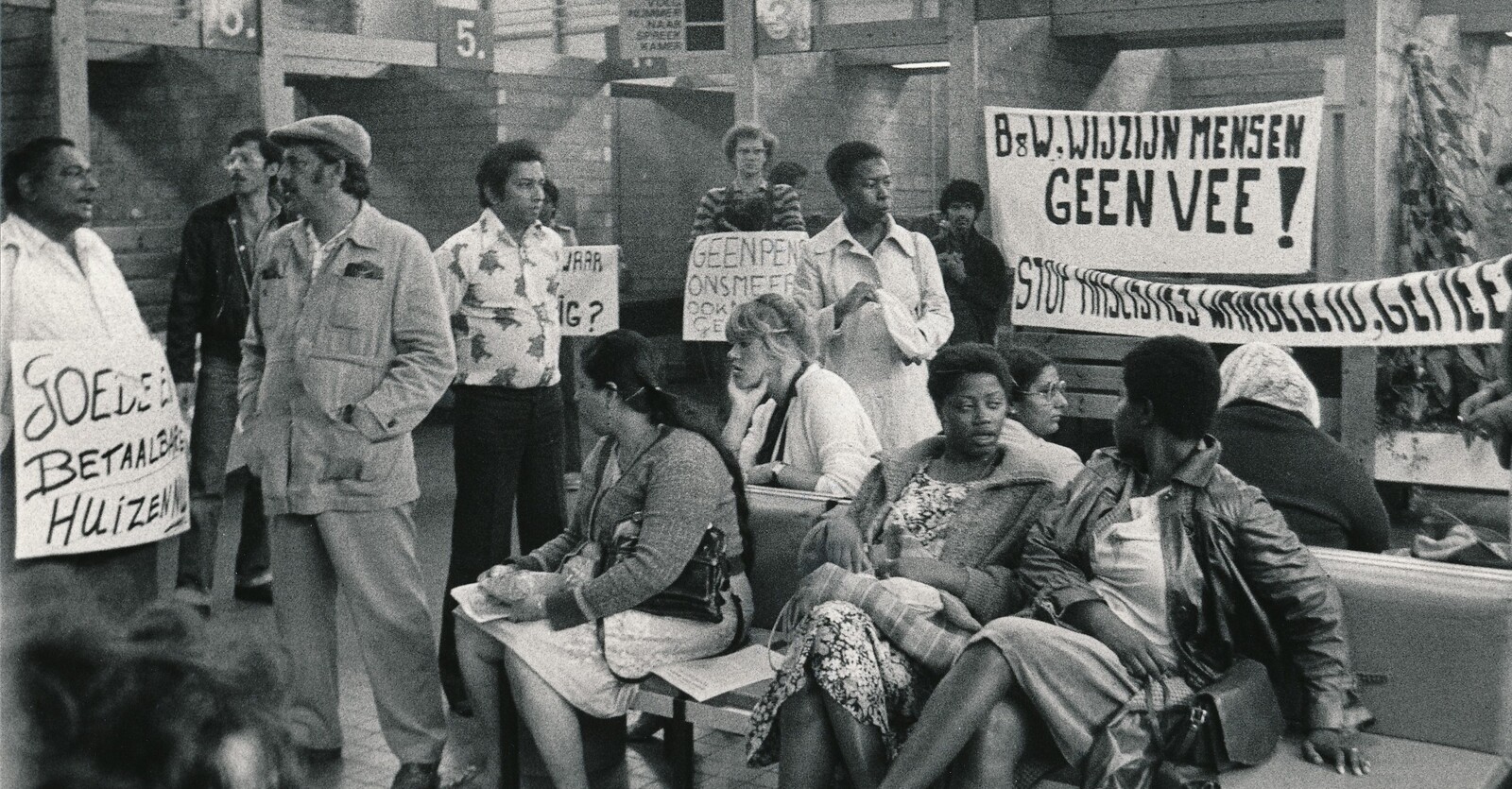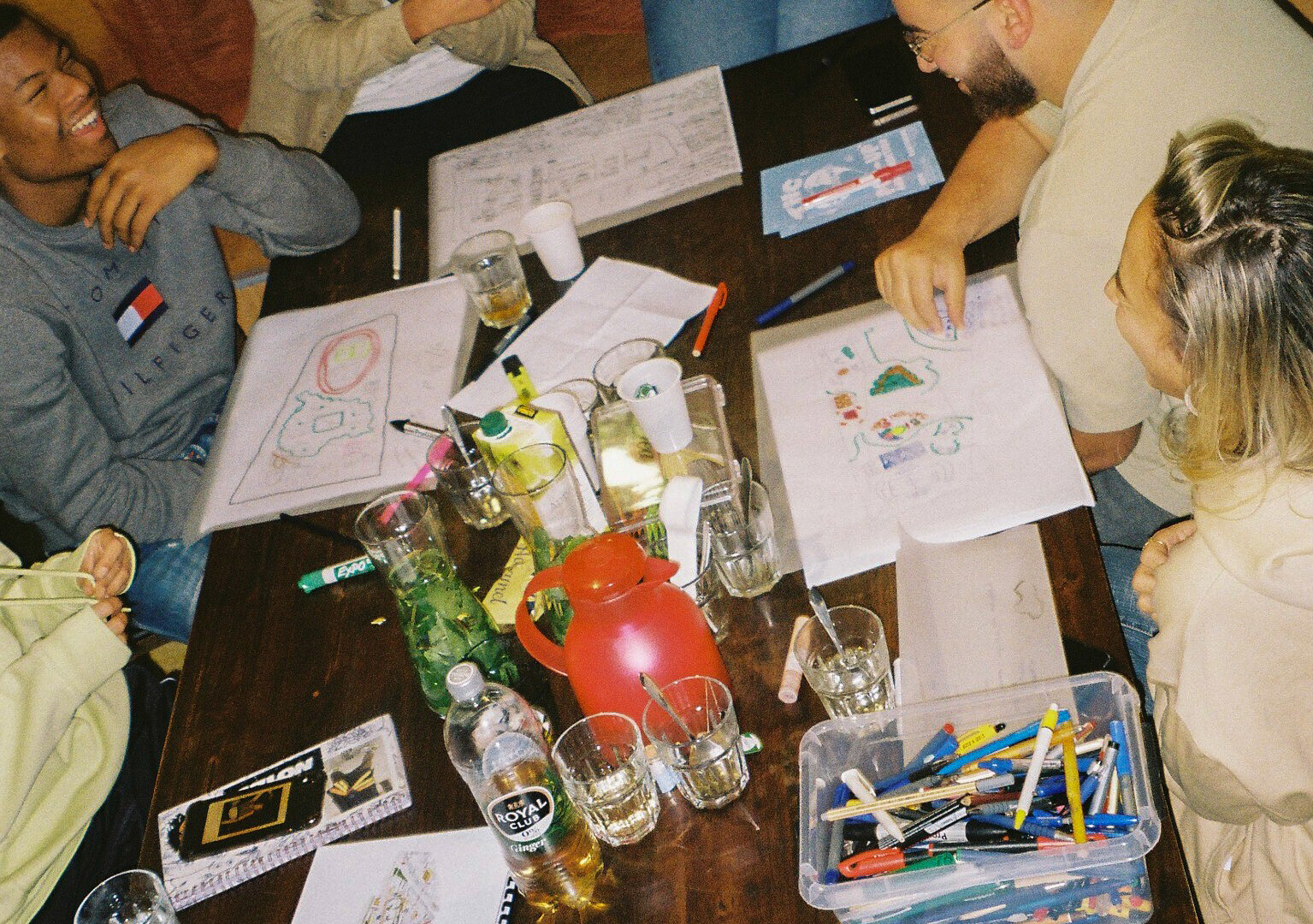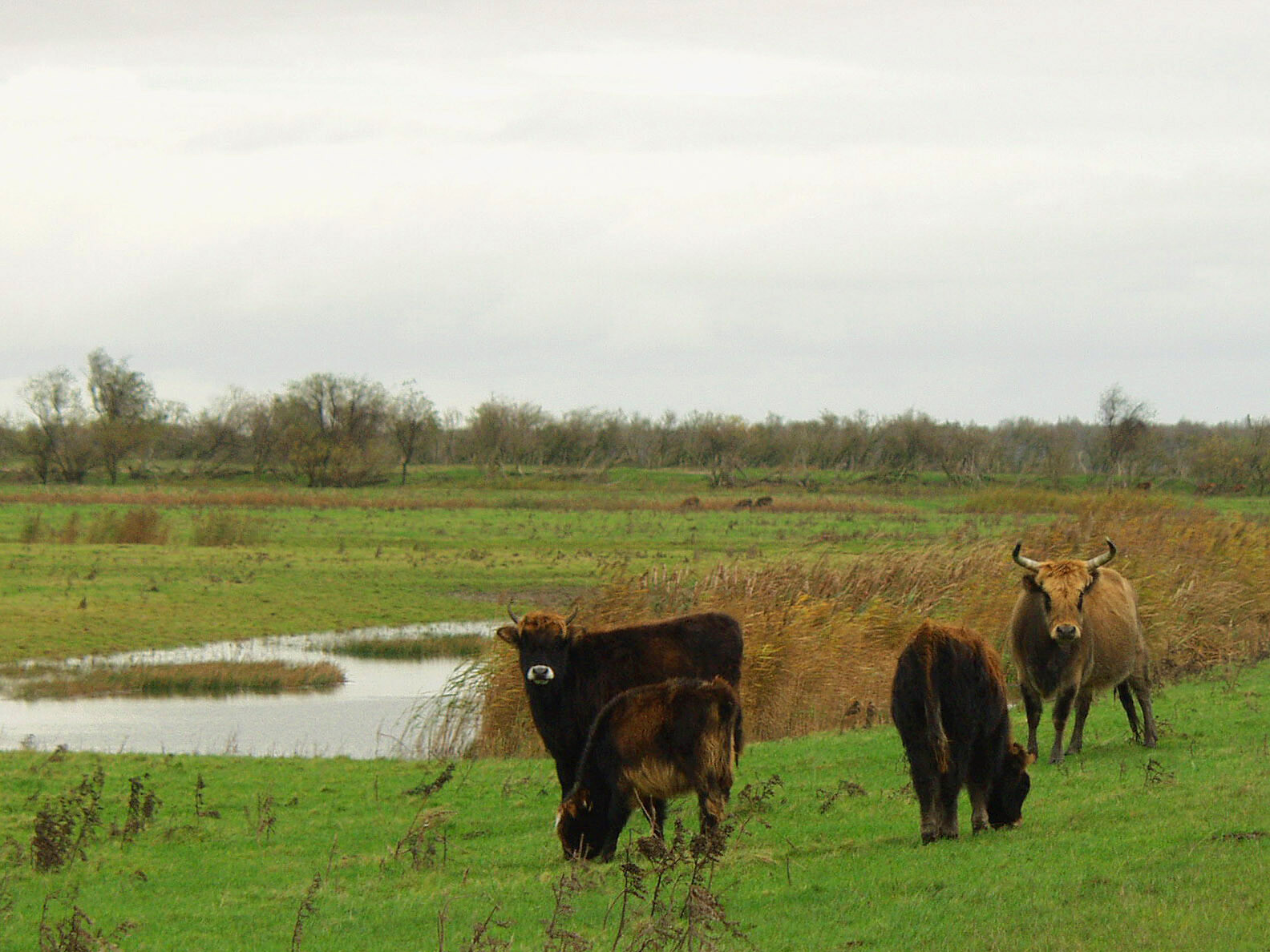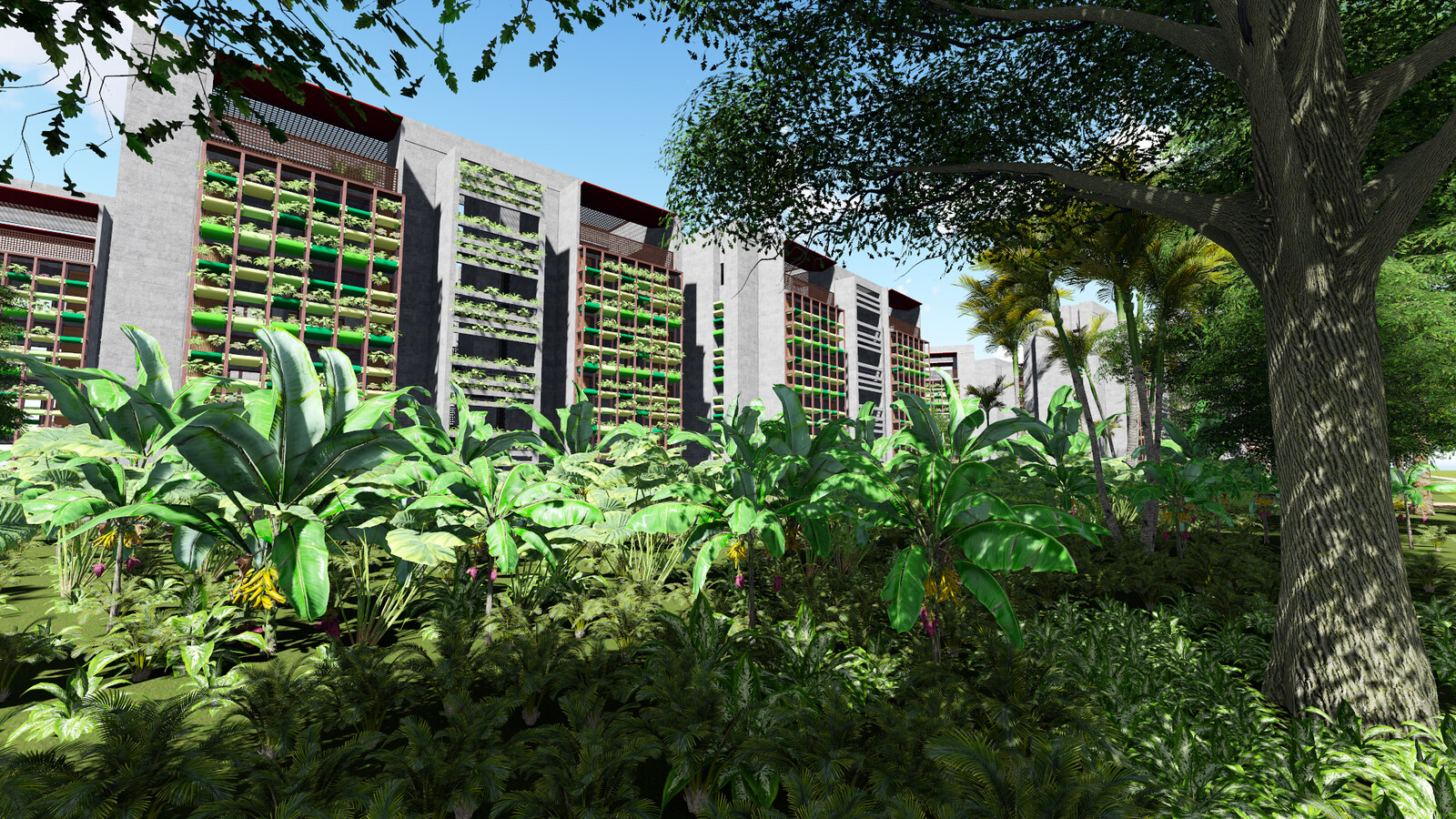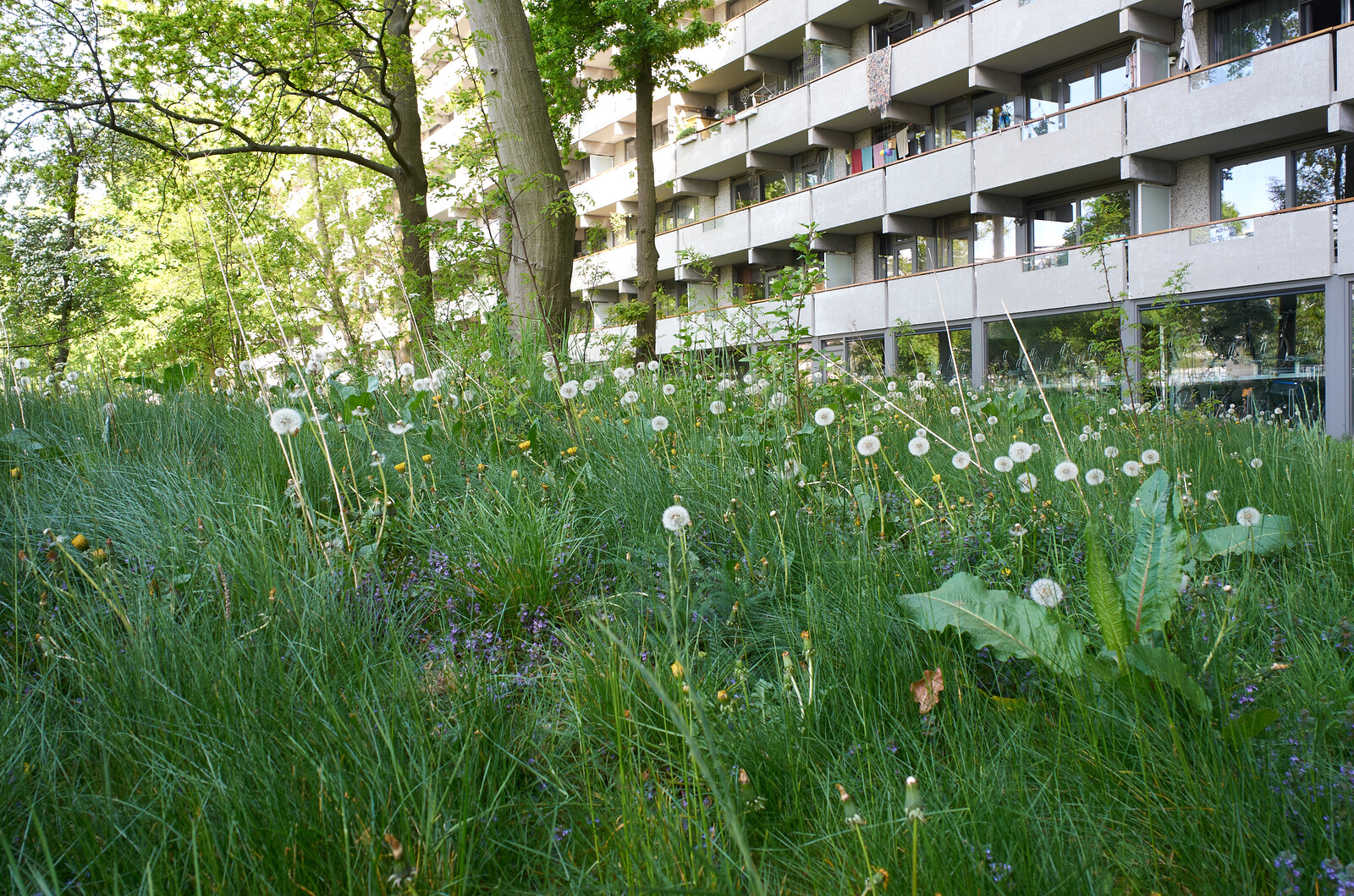In the 1970s, my parents were not allowed to live in the Van der Pekstraat in Amsterdam-North. Not around the corner in the Meeuwenlaan either. The neighborhood around Admiraal de Ruyterweg in Amsterdam-West was also off limits. As were Vlietstraat, Baarstraat in Amsterdam-South, Tellegenbuurt in the Pijp neighborhood, and parts of the Transvaalbuurt and the Indische Buurt in Amsterdam-East.
The reason? Amsterdam had designated neighborhoods, areas, streets, and apartment buildings where Surinamese were not welcome, even though they had a Dutch passport like everyone else.
The same thing happened in the city of Rotterdam where the government tried to “spread” Surinamese people across the country, many of whom migrated just before Suriname’s independence of 1975.
I was born and raised in Amsterdam but didn’t know this history of my own city and country. I only learned about these discriminatory policies when I read Zwartboek Gesloten Wijken (Closed Neighborhoods Blackbook). It was published by the Overleggroep Pensions (Boarding Houses Consulting Group) in 1978, and is part of the collection of The Black Archives, an archive of thousands of books, documents and other archival material on the topic of Black-Dutch history that I founded with Mitchell Esajas, Jessica de Abreu, and Thiemo Heilbron.
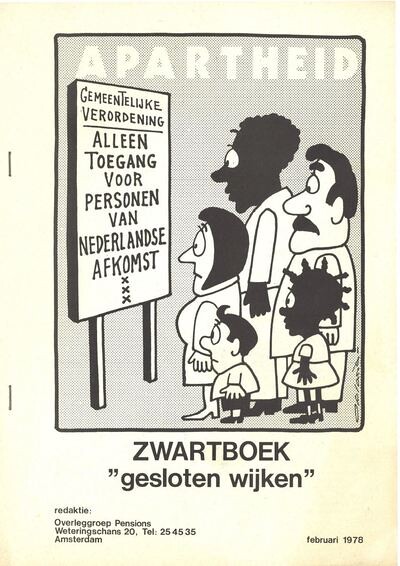

Zwartboek Gesloten Wijken (Closed Neighborhoods Blackbook), published by the Overleggroep Pensions (Boarding Houses Consulting Group) in 1978. Courtesy of The Black Archives.
Apartheid is not a term I associated with the socialist Amsterdam of the 1970s. And yet the word is on the cover of this activist blackbook. The book taught me the perspective of those who just arrived from Suriname. I also read policy papers from that period, and had conversations with Andre Reeder, who made a film about the poor housing conditions of the Surinamese, and with former civil servant Huib de Vet, one of the authors of the Zwartboek.1
The Surinamese become citizens
The perspective I gained about recent history in this way starts with the history I already knew, a history that is important to contextualize the cold reception of Surinamese people to the Netherlands in the 1970s.
Today, the Netherlands is among the most prosperous nations in the world. The foundations of this wealth were laid in the “Dutch Golden Age,” a large part of the seventeenth century when the Dutch East India Company (VOC) and the West India Company (WIC) were founded.
During this time, Dutch history became entwined with that of Suriname. Suriname was colonized in 1650, first by the British and then by the Dutch. The Sociëteit van Suriname (Society of Suriname), a private company overseeing the administration of the colony, was founded in 1683. Initially, the city of Amsterdam owned 33% of the shares in the company (along with the WIC and the wealthy Amsterdam family of Van Aerssen van Sommelsdijck). From 1791 to 1795 Suriname was the exclusive property of Amsterdam.
After 1795 the company and the colony changed hands to the Dutch state. In the course of two centuries, the Netherlands shipped about 550,000 enslaved Africans to the Americas who were forced to work on coffee, sugar, and cotton plantations.
After the emancipation of Dutch slaves in 1863 until 1940, the Netherlands shipped an additional 74,000 or so “contract laborers” to Suriname. They came from what was then British-India (“Hindustanis”) and from the former Dutch Indies (“the Javanese”). In 1954, the inhabitants of the Surinamese part of the Kingdom of the Netherlands became Dutch citizens and could travel freely to the Dutch part of the kingdom. In 1970, about 42,500 people born in Suriname and the Dutch Antilles (i.e. in a part of the Kingdom of the Netherlands) lived in the Netherlands.
The government examines an immigration ban
In 1970, the Dutch government published the policy paper “Nota Buitenlandse Werknemers” (“Report on Foreign Workers”), the first in a long series of documents on the topic. In it, it was plainly stated that “The Netherlands is not a nation of immigrants and should not become one.”
The Dutch government did not consider people from Suriname as Dutch citizens, but rather as foreign (labor) migrants. This is also evidenced by the “Mok Commission” which was appointed by the Dutch Biesheuvel government (1971–1973) and tasked with investigating how to limit the flow of Surinamese people to the Netherlands. In the end, the committee’s report was never published, but an article published in 1995 by the Dutch national newspaper NRC revealed that the commission drew up a full draft of a preliminary bill meant to bring this type of “limitation” into law.2
In this NRC publication, a former member of the Mok Committee states: “We were less concerned about the principle of equality… Now this principle is included in Article 1 of the Constitution. Now, I would never give the type of advice to a minister that was given in the Mok report.”
Ironically, right after the commission was established, mass migration to the Netherlands began. Surinamese people wanted to avoid a situation where they would no longer be able to move from the poorer colony to the affluent part of the Dutch kingdom.
It was not just the central government that tried to limit the influx of Surinamese people. Municipalities like Rotterdam, The Hague, Utrecht and Amsterdam adopted policies for “ethnic minorities” as well. In 1971, the city council in Rotterdam took a controversial decision to limit the number of “ethnic minorities” in certain Rotterdam neighborhoods to a maximum of five percent. The decision led to large protests mainly by migrant organizations. Six organizations of Surinamese and other migrant groups, supported by more than thirty other organizations from Rotterdam and all over the Netherlands, initiated summary proceedings. Eventually the decision was annulled in 1974 by the Dutch Council of State, because it was discriminatory and thus in violation of Dutch law. Incidentally, this did not stop the Rotterdam city council from reintroducing a regulation in the late 1970s that stipulated that a maximum of sixteen percent “ethnic minorities” could live in some neighborhoods.
After the Dutch elections of 1972, the progressive Den Uyl government stated in its coalition agreement that Suriname should become independent. A 1974 article in national newspaper De Telegraaf paints a picture of the panic that developed in Dutch government circles at the time. The headline reads: “Den Uyl’s Plan to Curb Mass Migration: Suriname Independent by July 1, 1975. The Earlier the Better.”3 Suriname would eventually become independent on November 25, 1975. The rest of the text also speaks volumes: “The Dutch government is rushing the date of independence because it sees it as the only way to stop a further influx of Surinamese to the Netherlands. Every month that independence comes later, the Cabinet believes, means another large flow of Surinamese to our country with all the social and financial consequences for our country itself as well as for Suriname. Closing our borders to Suriname was not considered possible by the Den Uyl government as long as the country was not independent: Surinamese possess the same passport as Dutch citizens.”
In the end, around 140,000 people moved from Suriname to the Netherlands between 1970 and 1980, almost half the population of Suriname.
Where were all these people supposed to go?
Most of the Surinamese who came to the Netherlands in the 1970s wanted to settle in the biggest Dutch cities: Amsterdam, Rotterdam, and The Hague. This was because of job opportunities, but often also to be close to family and friends, and close to Surinamese stores and other services.
Activist and filmmaker Andre Reeder was one of the people who came to the Netherlands at this time. Thinking back, he says: “I felt very lost in the beginning, as if I had landed on a different planet. White people looking at you constantly, approaching you in racist ways, etcetera. We looked to each other for comfort.”
“On paper and under the law, Surinamese people had access to everything and they had the same rights as the ‘autochtonous’ [native] Dutch population,” Reeder says. “And we were Dutch citizens. But the reality was very different, you were refused many things because you were Black.”
Housing was one of the most problematic issues: “If you wanted to rent a house, homes were suddenly occupied when you came to look while they turned out to be vacant for other people, or you suddenly had to pay exorbitantly high rent.”
Huib de Vet wrote about the situation in 1977 in the Groene Amsterdammer: “Now it is almost impossible for a foreigner or Surinam to get a house through a housing association. If he wants to become a member, there is a good chance that he will be hit by a normal or by a ‘limited’ membership stop, which in practice sometimes turns out to be a selective one… If an immigrant does manage to become a member, the waiting times for housing are so long that he will quickly be forced to look for another way.”
And about the alternative, municipal housing distribution, de Vet explains: “An owner can object to (a proposed tenant) and this happens considerably more often against foreign than against Dutch candidates… The result of all this is that within the Amsterdam housing distribution system foreigners and Surinamese are exposed to even longer waiting times than others and they end up in the worst neighborhoods.”
As a result, many Surinamese people ended up in “boarding houses.”
Beds crammed between cockroaches
In the 1950s and 1960s, boarding houses sprang up throughout the Netherlands close to factories and in other places where “guest workers” performed hard labor. After Indonesian independence, Indonesians and Moluccans were also placed in boarding houses. For the Surinamese, boarding houses would become a form of government subsidized shelter.
The government called on private individuals to make boarding houses available, and paid their owners a fixed amount for each Surinamese person housed. As a result, rental costs per household—which were typically 700 guilders per month at the time—rose to 3,000 guilders for Surinamese. The Surinamese were often unable to pay these amounts, but if proof was provided that Surinamese were housed here, the Dutch government paid the costs.4
In Amsterdam in 1971, the housing situation for “foreign workers” was abysmal. A report from the time states that “the situation in many places is brutal in ways that cannot easily be described.”5 Two years later the Amsterdam city council spoke of a “state of emergency situation” around boarding houses filled with Surinamese people. Amsterdam council members called the boarding houses a type of “people storage with deplorable conditions.”6
In 1982, Andre Reeder made the film Onderneming Onderdak (Shelter Enterprise) about the boarding houses of Amsterdam. One boarding house resident, Ruud, talks of fire hazards in the boarding house where he lives with twenty adults and children. It is a small room without an emergency exit, with rats are in the ceiling, and electrical cords hanging menacingly. Yet Ruud cannot seek redress because he has nowhere else to go if he leaves his present residence.
Michael, a high school student, discusses the shame he feels over his living conditions, with eight people in one room. He is too embarrassed to bring home friends, and he cannot do his homework there. He also tells of the poison that is sprayed on a regular basis, and of the dead cockroaches that pop up every day. Sewage pipes are clogged and the sink drains out onto the bathroom floor.
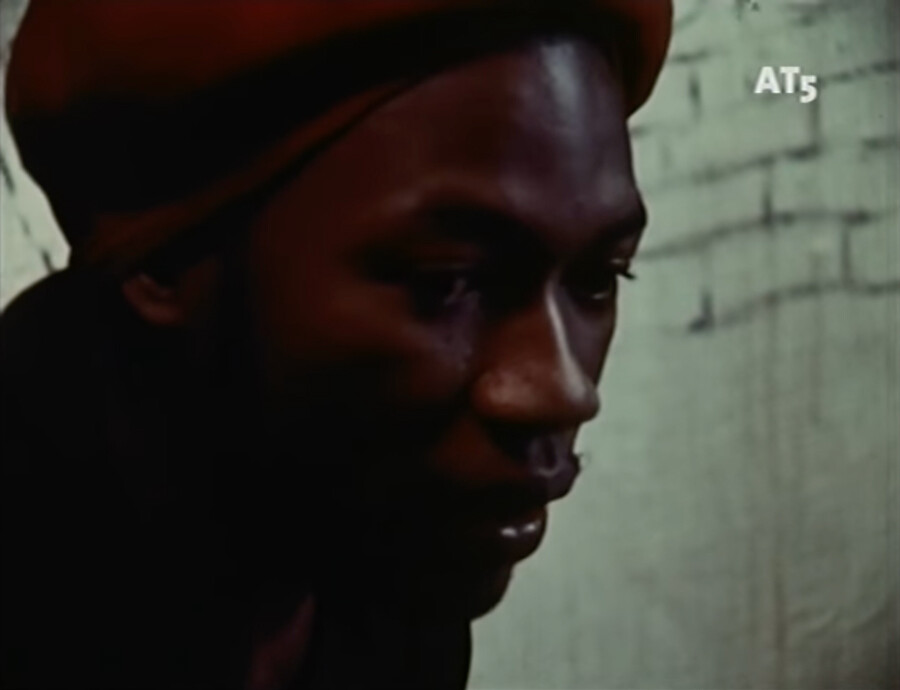

Film still from “Enterprise Housing, 1982,” final examination project of Andre Reeder at the Dutch Film and Television Academy. Source: YouTube.
The alternative: squatting
I spoke at length with Andre Reeder for this piece, who was 63 years old in 2017, when this piece was first published. In 1971 he arrived from Suriname as a seventeen-year-old in order to study in the Netherlands. As was the case for many other Surinamese people, he moved to the Bijlmer in the early seventies, a new Amsterdam neighborhood passed over by Dutch people looking for housing. Many apartment buildings were vacant. The Surinamese people who couldn’t wait to get out of the boarding houses considered the Bijlmer area an attractive option.
It helped that certain housing associations in the Bijlmer opened their doors to the Surinamese. One of them even had an ad campaign with the slogan “We do not discriminate.” In a few years’ time, this apartment complex, Gliphoeve-I had 2,100 residents, nearly ninety percent of whom were of Surinamese descent.7
This shocked the housing association, and around 1972, the decision was made to allow only white Dutch residents. But this decision came too late: by that point, Dutch whites were no longer interested, and vacancies ensued.
In 1973, vacancies in the Gliphoeve-I complex had risen to sixty percent. In 1974, a group of Surinamese people looking for housing (many from boarding houses) took matters into their own hands: they squatted in eighty of the 100 vacant homes.
On Museumplein in Amsterdam, a large solidarity protest was organized, among others by the National Organization of Surinamese in the Netherlands (LOSON), the organization that Andre Reeder was an active member of. The Bijlmer squatters were supported by the larger Amsterdam squatter movement that was concurrently protesting the demolition of houses in the Nieuwmarkt neighborhood to build a new metro line.
Newspaper articles of the time show the sizeable number of protests organized in support of the Bijlmer squatting actions. Surinamese people chanted “No eviction, no eviction” at an Amsterdam city council meeting, until the mayor suspended the meeting. One hundred Surinamese residents of the Gliphoeve complex occupied the Amsterdam city hall for an hour and a half in order to demand a meeting with Labor party Mayor Ivo Samkalden.
In the end, Gliphoeve was changed into a “social housing project.” All squatters who had been living in the Netherlands for over a year received a lease. With this, the city of Amsterdam took the last steps on the path it had already begun: the apartment residents were almost exclusively Surinamese.
Unfortunately, Gliphoeve spiraled downwards. The complex was quickly overpopulated. There was rampant unemployment, vandalism, and backlog in rent. Garbage men, mailmen, and even police officers felt unsafe there. Mail was no longer delivered, and garbage was only collected once a week. Crime and drug use went up.
Gliphoeve became nationally known as a scary image, a specter of “ghettoization.” Politicians and policy makers used this fear to strengthen their arguments for “de-concentration.” This is what could happen, they said, when large groups of Surinamese live together “in concentrated groups.”
Amsterdam rings the alarm bells
In 1974, the year of the Bijlmer squatting activism, the Netherlands was home to a Surinamese population of about 70,000 people.8 After the Bijlmer squatting, the mayor of Amsterdam said on national television that serious problems had arisen in his city with “25,000 to 30,000 Surinamese.” “The situation is worrisome because tensions between population groups are rising,” he said. He called for a “national plan.”
In The Hague, Labor party Minister of Education Jos van Kemenade predicted a “social disaster” due to the large groups of Surinamese immigrants to the Netherlands. Catholic party Minister of Justice Dries van Agt proposed “strict entrance policies” again to avoid a “social catastrophe,” with “skin color” as an “inevitable” criterion, something he qualified as a “very unpleasant development” but “legally possible” and “not ethically objectionable.” Ruud Lubbers, the Minister of Economic Affairs of the same party proposed lowering unemployment benefits for Surinamese people, even if this amounted to “a type of discrimination.”
Closing of neighborhood and streets
Policy soon matched words and warnings from the government. In the 1970s many formal and informal policies existed throughout the Netherlands to spread out and separate Surinamese people and other “ethnic minority groups.”
In 1974, the Dutch government started a nationwide “de-concentration” policy, which on paper was voluntary, but activists at the time report was not. In the Hague, the Centraal Bureau Uitvoering Vestigingsbeleid Rijksgenoten (Central Bureau for the Implementation of Settlement Policy of Fellow Citizens) was founded and tasked with spreading “immigrants” from the Surinamese part of the kingdom as widely as possible across the Netherlands. Municipalities, in turn, were forced to accommodate them, which led to protests by the local population, mayors, and aldermen against the arrival of Surinamese in various cities and villages throughout the Netherlands. As part of this plan, however, the first residence of new immigrants mostly took place in boarding houses.
From 1974 to 1979 Amsterdam had its own “de-concentration” policy. No more than one “minority” family could be housed per entryway. The term “minority” applied to Surinamese people and “guest workers” alike. Housing more than one such family per entryway could lead to nuisance and a “Gliphoeve-effect,” according to policy documents.
But the city council took this one step further. In some streets and neighborhoods all Surinamese were banned. The following neighborhoods in Amsterdam were closed to Surinamese and guest workers: in Amsterdam North, the area of the Meeuwenlaan, Adelaarsweg, and around the Van der Pekstraat; in Amsterdam East, the Transvaalbuurt, the Pythagorasstraat, Copernicusstraat, and the Indische Buurt; in West a part of Bos en Lommer; in South, the Vlietstraat, Baarsstraat, and Stadionbuurt; and the Bijlmermeer. According to policy makers, in all these places the percentage of “ethnic minorities” was already too high.
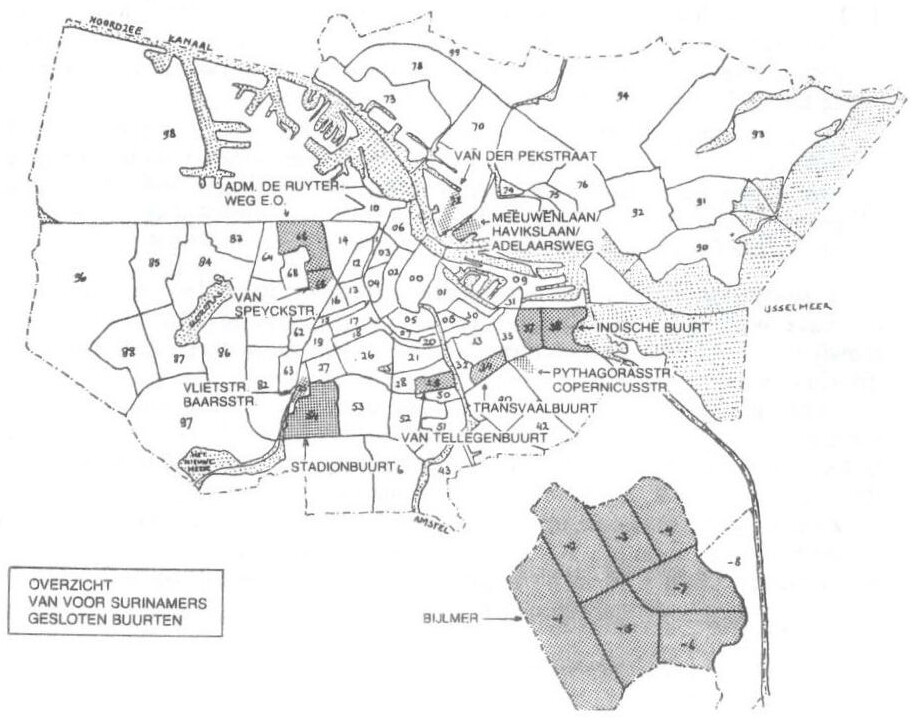

Map from the Zwartboek of neighborhoods closed to Surinamese people in dark grey.
The Surinamese rise up
Surinamese organizations and the Boarding Houses Consulting Group condemned these “closed neighborhoods,” and the media picked up the story. Several articles from that time point out, among other things, that the closing of neighborhoods was discriminatory and unconstitutional, and argue that it actually caused increased concentration rather than the desired de-concentration.
This is because the policy only applied to neighborhoods with many homes owned by either housing associations or the municipal government, where the Gemeentelijke Dienst Herhuisversting (the Municipal Service of Resettlement) had the power to assign renters.
There were other neighborhoods where the concentration of “ethnic minorities” was even higher, but with lots of private home ownership in them, the city had little power to assign housing there. As a result of the measure, these neighborhoods ended up attracting more “ethnic minorities.”
Where most Surinamese and other minorities lived was largely determined by the location of the boarding houses in Amsterdam. Those were usually rented by private owners in the worst parts of town, especially in the nineteenth-century neighborhoods around the city center.
Actions by the Boarding Houses Consulting Group and other groups were effective. In early 1978 the responsible Amsterdam city council member Louis Kuijpers, spoke about de-concentration policies in an interview in the Amsterdam newspaper Het Parool: “It was a working relationship with the housing associations and the municipal housing business. We have to end this agreement. It is a form of discrimination.”9
The closed neighborhoods of Amsterdam and Amsterdam’s de-concentration policies created national controversy as well. Questions were asked in parliament, and the Ministers of Housing and Justice condemned the Amsterdam policy as being in violation of international treaties on racial discrimination.
The Amsterdam housing associations, however, stuck to their guns. In a letter from 1978 to the Amsterdam city council, the Amsterdamse Federatie van Woningbouwcorporaties (Amsterdam Federation of Housing Corporations) wrote: “It appears that native Amsterdammers often feel threatened when surrounded by large numbers of members of minority groups… The question whether this feeling is or isn’t justified isn’t very relevant. The facts are what they are, and we consider it our responsibility to take these feelings into account. A social housing lender is required after all to safeguard the interests of current residents as much as possible.”
In 1979, Amsterdam’s de-concentration policies were formally repealed.
The city let things get out of hand
For this story, I spoke with, among others, Huib de Vet, one of the authors of the Closed Neighborhoods Blackbook. In the 1970s he became a community worker and co-founded the Boarding Houses Consulting Group that protested and pressured the municipal boarding house policies. He subsequently started working for the city himself, including as a municipal coordinator of the municipal Gliphoeve project in the Bijlmer.
De Vet thinks the “Gliphoeve problem” would not have developed in the first place if the city of Amsterdam had opened the housing market to the Surinamese. He thinks that the housing corporations, which were put in place to help the less privileged in society, failed to accommodate people of (a different skin) color.
He also puts the fearful image of Gliphoeve as a ghetto in perspective. “People made quite a mess and lived in bad circumstances, and there was a lot of violence and noise, but this was in large part due to the unrestrained and speedy admittance of so many people in one apartment complex. And consider also that the Surinamese people placed here were not used to living in apartments in the first place.”
Looking back, De Vet concludes that the authorities chose to “let the situation get out of hand in a controlled way” in Gliphoeve. The city wanted to make sure that the wave of Surinamese didn’t spread across the entire Bijlmer neighborhood, but with their actions, they created the concentration that they subsequently denounced.
Looking back, De Vet is milder than he once was. He still thinks that various government organizations and corporations did strange and wrongful things. But often people acted improperly because they simply made things up as they went. “Nobody thought about it, everybody just did whatever, both corporations, the government, and cities.” One failing, ineffective, short-term solution was patched up with another.
De Vet also developed more of an understanding toward Amsterdam’s reaction. “There was already an enormous housing shortage in the seventies, and then large numbers of people were added with good reasons to need their own housing. That causes tensions, among residents and politicians. I can understand that.” Looking back, he is especially happy that the Surinamese and other “minorities” are a lot better off today than they were then.
Racism continues, activism does too
Filmmaker Andre Reeder is more critical of government conduct in the seventies. “The independence of Suriname was not planned well, there was never a real investment in Suriname. After hundreds of years of exploitation, the colony was no longer profitable, and the Netherlands wanted to be rid of it. The people in the colony fled to the Netherlands and were subsequently portrayed as ‘profiteers.’ The same way that refugees are dealt with these days. And on top of that we were Dutch citizens, joined through hundreds of years of colonialism.”
Reeder thought it was shocking that white citizens had no awareness that Dutch prosperity was partly due to four hundred years of slavery. “The Dutch were indoctrinated into thinking that White was good, that the Netherlands was charitable to the world, etcetera. You were not allowed to call people out or bring them to account for being racist.”
He thinks that the government, with their de-concentration policy, created the image that the Surinamese were a problem. “Newspapers like De Telegraaf created an atmosphere as well that Surinamese people were profiteers, thugs, people who came to steal your job. Similar to what refugees are reduced to now.”
Much has changed, but according to Reeder there is still structural racism in many areas. But he also sees positive changes: “You see a lot of progress in the situation of Surinamese people today: socially and culturally. What I am most proud of is the young Black generation today. I find it very inspiring what they are doing. A new generation of activists has risen.”
For this piece, the author spoke with Andre Reeder, Huib de Vet, and Klaas Breunissen. In addition to the sources mentioned, I also made use of overviews in publications De Minderheden: 600.000 vreemdelingen in Nederland (Minorities, 600,000 foreigners in the Netherlands) by Peter Schumacher (Van Gennep, 1980) and the blog of the BijlmerMuseum.
The reconstruction also shows that in 1972 the Dutch Minister of Justice Dries van Agt suggested the idea “to amend the constitution in such a way that fellow citizens could be stopped at (the Dutch airport) Schiphol, despite their Dutch passport.” Hans Buddingh, “Stroom Surinaamse immigranten veroorzaakte paniek in bestuurlijk Nederland; Rijksgenoten op de stoep” (“Flow of Surinamese immigrants caused panic in administrative Netherlands; Reichmen on the doorstep”), NRC, November 24, 1995, ➝.
“Plan van Den Uyl om volksverhuizing in te dammen: Suriname al 1 juli 75 onafhankelijk” (“Den Uyl’s plan to curb population movement: Suriname independent as early as July 1, ‘75”), De Telegraaf, September 3, 1974, ➝.
Andre Reeder, Onderneming Onderdak (1982), ➝.
“Huisvesting gastarbeiders laat veel te wensen over” (Housing guest workers leaves much to be desired”), Reformatorisch Dagblad, December 17, 1971, ➝.
Fractie van D’66, “Amsterdam machteloos tegenover noodtoestand Surinaamse pensions” (“Amsterdam powerless in the face of emergency Surinamese boarding houses”), Reformatorisch Dagblad, February 26, 1973, ➝.
This was nearly one quarter of the total Surinamese population.
“Ander spreidingsbeleid” (“Other dispersion policies”) , interview with Louis Kuijpers, Het Parool, January 5, 1978.
Where is Here? is a collaboration between Het Nieuwe Instituut and e-flux Architecture following Who is We?, the Dutch pavilion at 2021 Venice Architecture Biennale.
Category
Subject
Translated by Annemarie Toebosch.
This story was first published by De Correspondent in Dutch.
